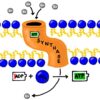Table of Contents
What Is Cyclical Unemployment?
Cyclical Unemployment: Cyclical unemployment is directly related to the level of macroeconomic activity, which is the aggregate, or combined, activity of all persons and entities involved in an economy. This aggregate activity is cyclical instead of linear – economic activity tends to rise and fall, instead of always rising or always falling.
Let’s look at increases in the business cycle first, and their effect on unemployment. When economic activity increases, we call this an expansionary phase of the business cycle because it represents economic growth. Unemployment tends to drop during periods of growth because consumers are buying more and businesses are producing and selling more. These increases in production and sales usually require more people, resulting in increased hiring and an overall reduction of the rate of unemployment.

Now let’s turn to the bad news. When economic activity slows, or contracts, unemployment will increase. During times of slow growth, no growth or a period of economic contraction, a recession, demand for products and services declines. Employers make less, sell less and don’t need as many employees. Employers will lay off those employees who are not needed, which raises the unemployment rate. This increase in unemployment can lead to a problematic feedback loop where unemployed people can no longer afford to buy stuff, which means that demand decreases even further and more people are laid off, leading to even less demand and so on.
What are some examples of cyclical unemployment?
Examples. An example of cyclical unemployment is the loss of construction jobs during the 2008 financial crisis. As the housing crisis unfolded, home builders stopped constructing new homes. As many as two million construction workers lost their jobs.
Why does cyclical unemployment occur?
Cyclical Unemployment Definition
Cyclical unemployment is unemployment that results when the overall demand for goods and services in an economy cannot support full employment. It occurs during periods of slow economic growth or during periods of economic contraction. Let’s explore this type of unemployment in a little more detail.

Cyclical unemployment is the component of overall unemployment that results from economic upturns and downturns. Unemployment rises during recessions and declines during economic expansions. Moderating cyclical unemployment during recessions is a major motivation behind the study of economics and the goal of the various policy tools that governments employ to stimulate the economy.
Define Cyclical Unemployment
Cyclical unemployment relates to the business cycle in an industry. It is a direct result of fall in demand from consumers leading ot a slump in demand for labour.
If cyclical unemployment is rising, it also means that the economy is showing signs of slowdown which is not good. The lack of demand means that there is not enough consumption. The government would then need to address the issue by various fiscal and monetary policies to support economy.
Cyclical unemployment is one of the five unemployment types which are recognized by economists. Apart from cyclical unemployment, there are structural, and frictional types of unemployment.
Cyclical unemployment is directly related to the macro-economic situation in the economy. It would rise at a time of recession, while reduce when the economy starts recovering. The economic activity tends to move up and down and cannot be classified as linear.
When the economy slows down, it will reduce the overall demand, reduce consumption, and that would lead to production cuts in various industries. We have seen that the auto sector resorted to production cuts at a time when the demand for cars were slowing due to higher fuel prices and economic slowdown.
Cyclical Unemployment Refers To
Cyclical unemployment relates to the irregular ups and downs, or cyclical trends in growth and production, as measured by the gross domestic product (GDP), that occur within the business cycle. Most business cycles eventually reverse, with the downturn eventually shifting to an upturn again, followed by another downturn.
Economists describe cyclical unemployment as the result of businesses not having enough demand for labor to employ all those who are looking for work at that point within the business cycle. When demand for a product and service declines, there can be a corresponding reduction in supply production to compensate. As the supply levels are reduced, fewer employees are required to meet the lower standard of production volume. Those workers who are no longer needed will be released by the company, resulting in their unemployment
When economic output falls, the business cycle is low and cyclical unemployment will rise. Conversely, when business cycles are at their peak, cyclical unemployment will tend to be low because there is high demand for labor.
Cyclical Unemployment Examples
During the financial crisis in 2008, the housing bubble burst and the Great Recession began. As more and more borrowers failed to meet the debt obligations associated with their homes, and qualifications for new loans become more stringent, the demand for new construction declined. With the overall number of unemployed climbing and more borrowers unable to maintain payments on their homes, additional properties were subject to foreclosure, driving demand for construction even lower. As a result, approximately two million workers in the construction field became unemployed. This rise in unemployment was cyclical unemployment.
As the economy recovered over the following years, the financial sector returned to profitability and began to make more loans. People began buying homes again and remodeling, causing the prices of real estate to climb once again. Construction jobs returned to meet this renewed demand in the housing sector and cyclical unemployment declined.
An example of cyclical unemployment is the loss of construction jobs during the 2008 financial crisis. As the housing crisis unfolded, home builders stopped constructing new homes. As many as two million construction workers lost their jobs. Whenever home building starts up again, they will be able to go back to work.
Someone can start out being cyclically unemployed then wind up as a victim of structural unemployment. During the recession, many factories switched to sophisticated computer equipment to run machinery. Workers now need to get updated computer skills so they can manage the robots that now run the machinery they used to work on themselves. Fewer workers are needed, too. Those who don’t go back to school are structurally unemployed. Their skills no longer match the needs of the workforce.





